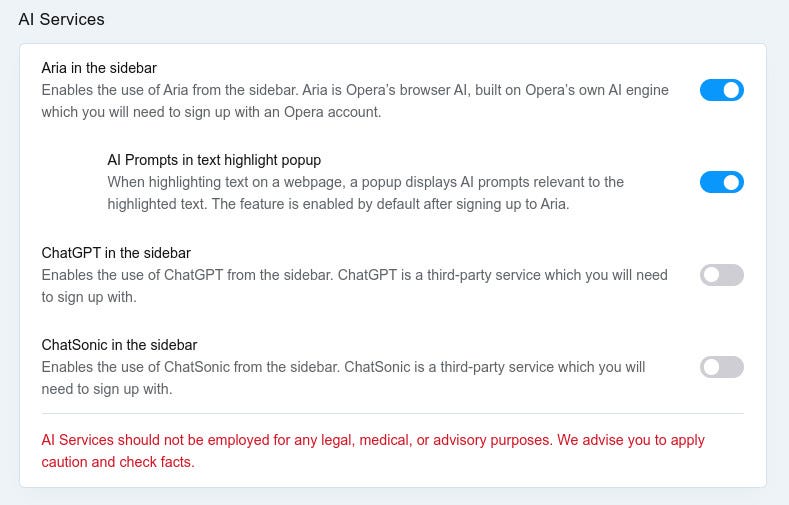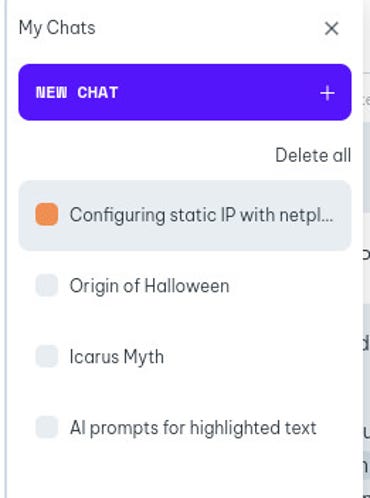Like almost every tech company on the planet, Opera took the AI turn some time ago.
While there are some areas where I think AI should be banned (like art, literature, journalism, and politics), there are some areas where it has clear benefits (like medical industry, science, technology and mathematics).
And I’m not going to lie, I haven’t used AI much so far, other than to follow the news. But the other day, my curiosity was piqued. I wanted to compare the result of a Google search to that of a search on an AI chatbot. The results surprised me and should probably discourage Google a little.
For those who choose Opera as their default browser (and you should because it’s awesome), know that it has a built-in, easy-to-use AI chatbot with real-time access to the web, called Aria.
It turns out that going with Aria (rather than Google) makes it easier to find what you’re looking for. Instead of digging through outdated content and content from suspicious sites, you simply get your answer. No need to click through different items to find what you are looking for. And you don’t have to worry about coming across a site with malicious code.
It’s quite simple.
Of course, there is a caveat to this: is the answer correct?
I did some tests and found the answers were almost correct. However, there were a few instances where Aria botched her response. One of them is how to configure a static IP address in Linux with Netplan.
Aria answered the question correctly, except that she used an outdated method of setting up a gateway address. If I had strictly followed the steps provided by Aria, the setup would have failed.
That being said, I have found that using Aria as a research tool is quite effective.
So let’s see how to activate and use it, so you can make your searches more efficient.
How to enable Aria on Opera
What you will need: an updated version of Opera installed on your desktop and a free Opera account.
1. Open Opera Settings
Type opera:settings in Opera’s address bar to open the settings window.
2. Enable Aria
Scroll down to the bottom of the settings window and click Advance. Then scroll down to the section AI Services. Make sure the On/Off slider is On to actually enable Aria in the sidebar. Then close the settings window.

Screenshot by Jack Wallen/ZDNET
You can also enable AI in the pop-up window text highlighting, in case you come across a term or phrase that you want to use as a prompt for Aria.
How to use Aria
Using Aria is very simple. Click the Aria icon (which looks like a white A in a multi-colored square) in the sidebar. Aria will then open and you can type your message at the bottom right of the screen. Aria takes a few moments before displaying your query results in the sidebar.

The Aria prompt is easily accessible from the Opera sidebar. Jack Wallen/ZDNET
You can repeat the same prompt by clicking the circle with the arrow or copy the results by clicking the copy button (both are to the right and above the prompt).
To remove Aria, simply click on the icon in the sidebar. Until you clear them, all your messages will remain displayed.
One thing to keep in mind is that every time you want to start a new prompt, click the + button at the top right of Aria’s sidebar, otherwise all your prompts will be grouped together and you won’t be able to see them individually.
To view your interactions with the Aria chatbot, click the three horizontal line button at the top left of the sidebar, where you can select the previous messages you want to view.

Access all your previous messages and start a new one from here. Jack Wallen/ZDNET
That’s all there is to it to enable and use Aria AI in the Opera browser. Don’t forget to check the results, otherwise you may end up with incorrect information.
Source: “ZDNet.com”
